Step-by-Step Toward Loving My Body
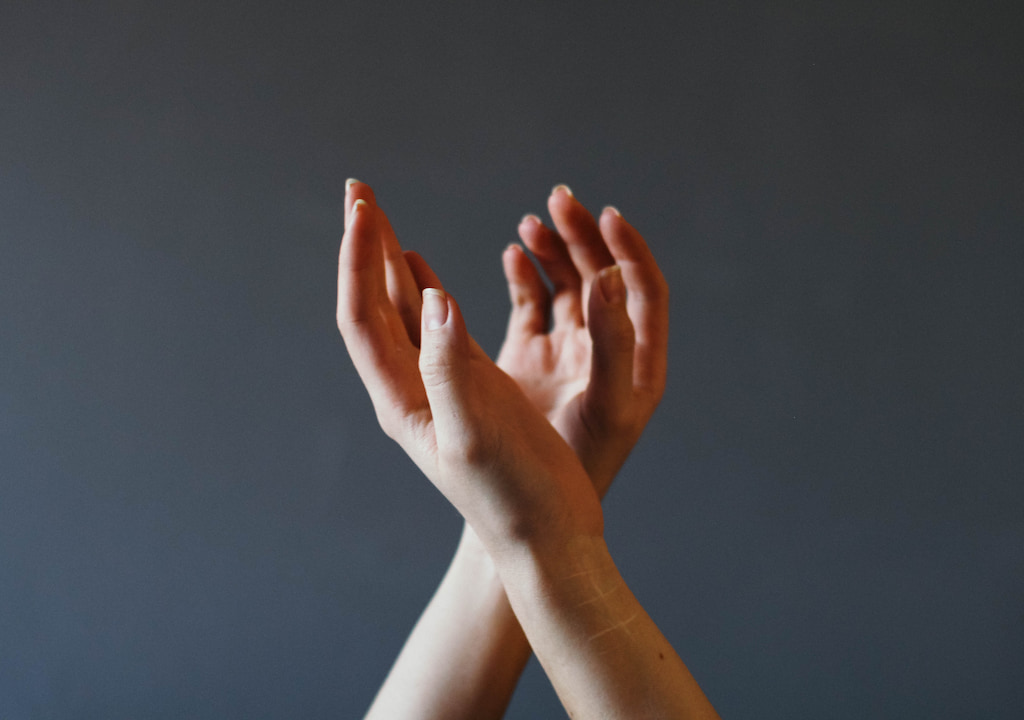
Table of contents
What do you see when you look in the mirror? How do your emotions, physical sensations, and behavior toward your body create your self-perception. Spend five minutes in front of the mirror and then write down your lingering thoughts after doing so. For example, you can write down things like: “I feel strong,” if that thought comes up or, “‘ I feel empowered,” if you feel that way. Or, maybe you’re noticing tension in your back or negative thoughts around food and eating. Read what you wrote out loud. How would you describe the language you used to talk to yourself? Is it constructive or destructive? What’s your tone of voice like? Did you focus more on the positive or negative? Or, are you looking from a more neutral perspective? Do you focus on your whole body or some particular parts? Would you also speak this way to a friend you love?
When many of us look in the mirror, we may find ourselves criticizing the features we don’t like and want to change, sometimes even without noticing we’re doing it. After a while, this attitude becomes automatic and habitual, becoming part of our routine to detect the negative about ourselves. However, this situation can damage our relationship with our bodies, disconnecting us from our bodies over time and weakening our bond with ourselves. Additionally, there are external factors that can also lead to a disruption in this bond, deteriorating our relationship with ourselves and others: diet culture, white westernized beauty standards that celebrate thinness, calorie counting apps and devices, and toxic social media posts advertising weight loss and comparison photographs.
“Body Positivity” is a movement that was initiated to reverse these very effects and was first started in 1996 by Connie Sobczak and Elizabeth Scott, LCSW. We can define “Body Positivity” as follows: To accept and love your body unconditionally against all kinds of changes it may be subjected to due to various reasons throughout your life. These changes can be the changes in our weight and height, as well as aging, flexibility, physical disabilities, and limitation of our movement ability. It’s important to note that the body positivity movement very much finds its roots in fat acceptance, a movement in the 1960s that worked toward making body culture more inclusive and diverse. We all have our own insecurities when it comes to our bodies, but if body positivity isn’t centering and including fat people, it’s missing the mark. Because, while thin people may experience insecurities and no one’s trying to dismiss those very real feelings, they do not face the same harmful systemic issues that fat people do from industries like the healthcare sector and beyond.
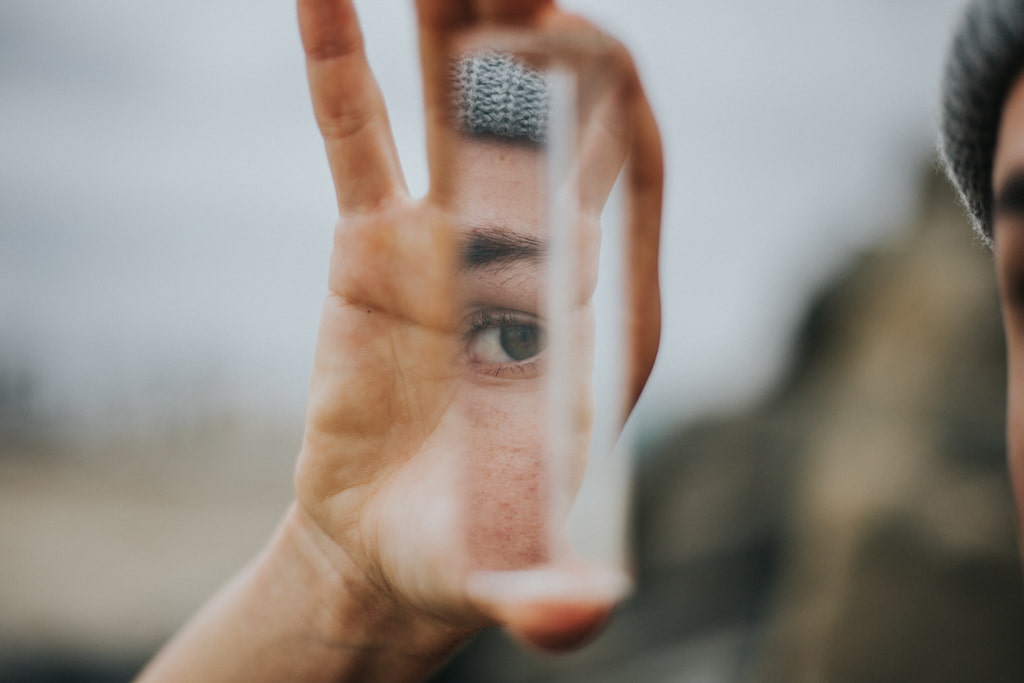
Let’s look at the powerful impact body positivity has had even as we hold space for interrogating its inclusivity. Two things can be true at the same time. As body positivity has become co-opted for the mainstream, it’s gained a huge following. The movement aims to tackle body perception and eating disorders that have been increasing over the past years. Especially in recent years, as it has become a popular trend in social media, we’ve begun to observe positive changes regarding body perception through frequent messages, posts, and studies in many different sectors on this subject. All these changes give us hope for more fundamental changes in the long run.
For some of us, “Love yourself, love your body, ” messages may sound utopic and can inspire questions like “But how? Where do I start?” to form in your mind. Some of us may feel lonely, helpless, and distant from our bodies when reading these positive messages, because it may seem like an almost impossible goal, so far from where we’re standing. You’re not alone. We should not forget that loving our body is a process… That means that there are some stages we will go through step by step on the way to loving our body. So, if you’re asking yourself whether or not you’ll ever be able to embrace your body unconditionally with love and affection, then my answer is:
This is absolutely possible, but step by step.
If you’re ready, let’s start over:
We mentioned that loving our body is a process. As a tool to begin to understand our relationship with our own bodies, we can refer to the body image spectrum.
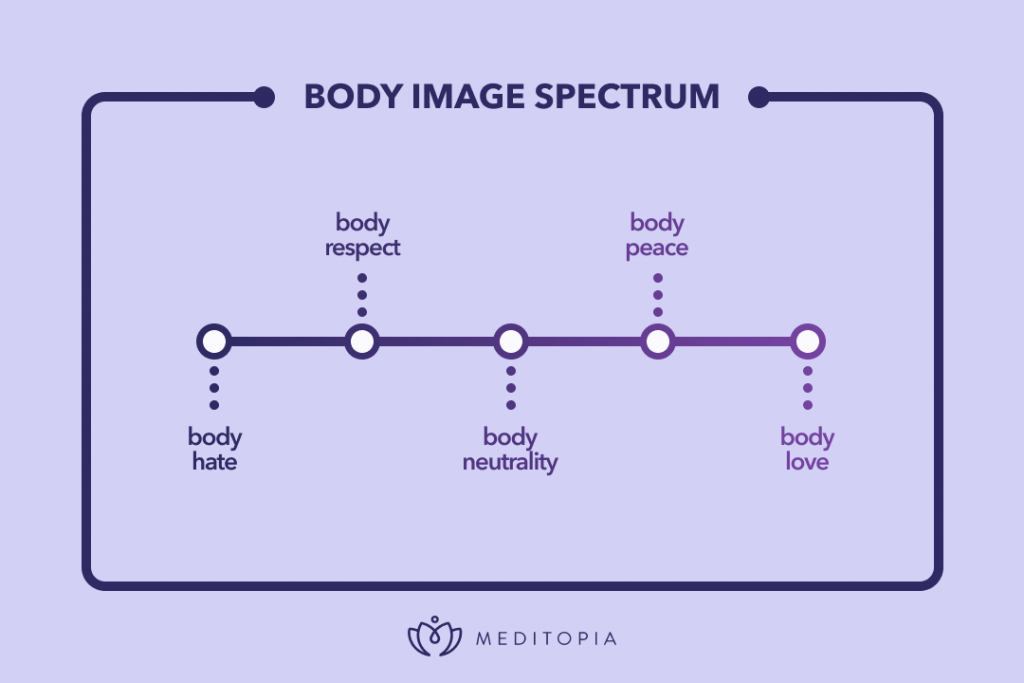
The questions below can help guide you as you begin exploring your relationship to your body. Remember, our aim in answering these questions is to learn, so it’s good to start by approaching yourself with curiosity, care, and compassion, while avoiding negative self-talk or judgment. more about our relationship with our bodies.
Questions:
Do I meet the basic needs of my body? For example: hygiene, food, sleep…
Do I neglect the health of my body with strict diets, exercise regimens, or other methods?
Do I listen to and honor the signals that my body sends about hunger, satiety, and satisfaction?
Do I wear clothes that make me feel comfortable?
Do I compare my body with other people’s bodies?
How do I choose my words when talking to or about my body? Am I using constructive, destructive, or neutral language?
Am I thankful for the opportunities my body affords me?
Can I accept my body as it is?
Am I at peace with my body?
Am I proud that this body belongs to me?
Do I love my body and appearance completely, regardless of any circumstances?
Knowing where we are on the spectrum gives us an important awareness of where to start improving our relationship with our body. In this way, we can see more clearly what awaits us in this process and we can measure our development much more efficiently.
Let’s think of our body as a vacant garden and each step we take toward loving our body is a seed. First, we’ll carefully sow these seeds in our garden. Later, we’ll nourish these seeds with love and affection. We’ll protect them against winds and harsh weather conditions, we’ll do our best to prevent them from being damaged. Then, these seeds of love that we’ve planted will bloom in the future. One day, we’ll realize that they’ve turned into a colorful, stunning garden of love. Thus, as we look at it, we’ll not only remember how wonderful it is, but also the efforts we put into cultivating this garden and our journey.
“… And I said to my body, softly, ‘I want to be your friend’. It took a long breath and replied: I’ve been waiting my whole life for this.” Nayyirah Waheed.
Let’s explore some obstacles that may be preventing us from loving ourselves and brainstorm how to foster and grow seeds of self-love.
Some important tips for establishing a healthier relationship with our body
1.Numbers on the scale
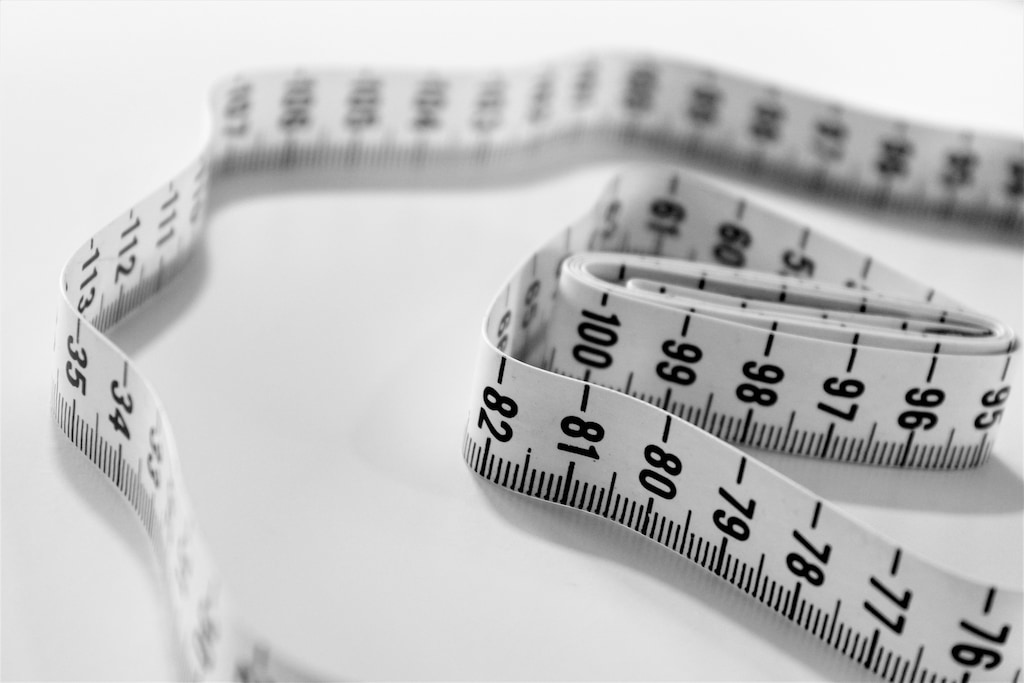
Scales measure “weight”, not “value”. The number we see on the scale shows only our body weight, not our value. The numbers on the scale may vary, but this does not mean that our value has changed. These are two distinct concepts, independent of each other. We are special and worthy in all of our forms, independent of all numbers. What makes humans valuable is not something that can be measured by numbers. So, what makes us valuable? How we care for ourselves, others, and the greater community are just a few examples. Feeding a hungry street cat and finding a vaccine that is vital for humankind can also make you valuable. We are ever-evolving and our value cannot be fixed to one action, thought, or deed. We are beautiful for all of our complexities.
Seed Suggestion:
Sometimes we may forget what really makes us valuable. In such cases, writing small notes to ourselves and sticking these notes on the mirror, on our computer, on the refrigerator, can be good reminders. Consider responding to this prompt: What are the three characteristics I love, like, or am proud of about myself?
2.Clothing preferences
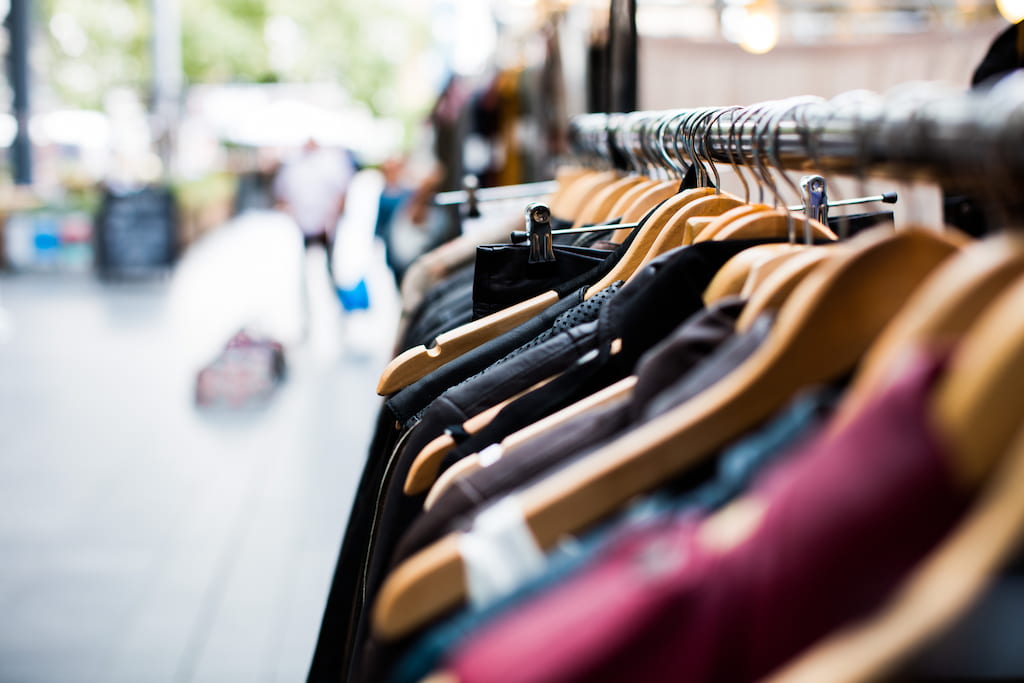
We often change clothes based on the occasion, whether it be a dress, blouse, trousers, that special tie, etc. Sometimes, we find ourselves limiting what we wear, saying things like, “I will wear this dress if I lose weight,” or “I will go shopping after I lose weight.” However, we all like, want, and deserve to dress beautifully. When we wear the clothes we love, we feel happier, safer, and more comfortable. In fact, this is a self-care strategy that we can show our bodies and ourselves.
Seed Suggestion:
Gift yourself an outfit that you feel comfortable in and love. Get in front of the mirror in your outfit and smile for 1 minute. Maybe even document this moment of celebration with a selfie. Don’t forget to thank yourself for this kind gesture.
3.Perfectionism
Perfectionism is perhaps one of the biggest obstacles to our love for ourselves and our bodies. It’s important to understand the difference between being perfect and trying to reach our potential. Reaching our potential means “doing our best” and being satisfied and happy with the result. Trying to be perfect means to relentlessly work to achieve the unachievable, to be all-knowing, an expert, the best, without failure. And if such failure occurs, which it inevitably will, you experience feelings of disappointment, defeat, and inadequacy. Thus, perfectionism is not a healthy and achievable goal, it’s a harmful myth. Many studies show that perfectionism increases our stress and anxiety levels and has been connected to eating disorders as well. Therefore, if we want to establish a more peaceful and harmonious relationship with ourselves and our bodies, we can try to find a middle ground with our inner perfectionist voice.
Seed suggestion:
You can revisit the goals you’ve set for yourself. If we set moderate goals while trying to reach our potential, we won’t lose our motivation on the journey toward our goals and we can enjoy the process over the destination. Question: Instead of focusing on perfection, can I experience the peace of mind in doing my best?
4. Comparison
“A flower does not think of competing with the flower next to it. It just blooms”, says Zen Shin. Our lives are like a private flower garden. If we’re looking at others, observing them, trying to be like them, we’ll be wasting our precious energy on watering someone else’s garden. We can be in a happier relationship with ourselves if we use that time and energy to enrich our own garden.
Seed suggestion:
Instead of comparing ourselves to others, focusing on what we have in our lives and practicing gratitude can make us feel better and more competent, increasing our self-worth. Question: What are those things about myself and my body that I’m grateful for?
5.Destructive inner voice
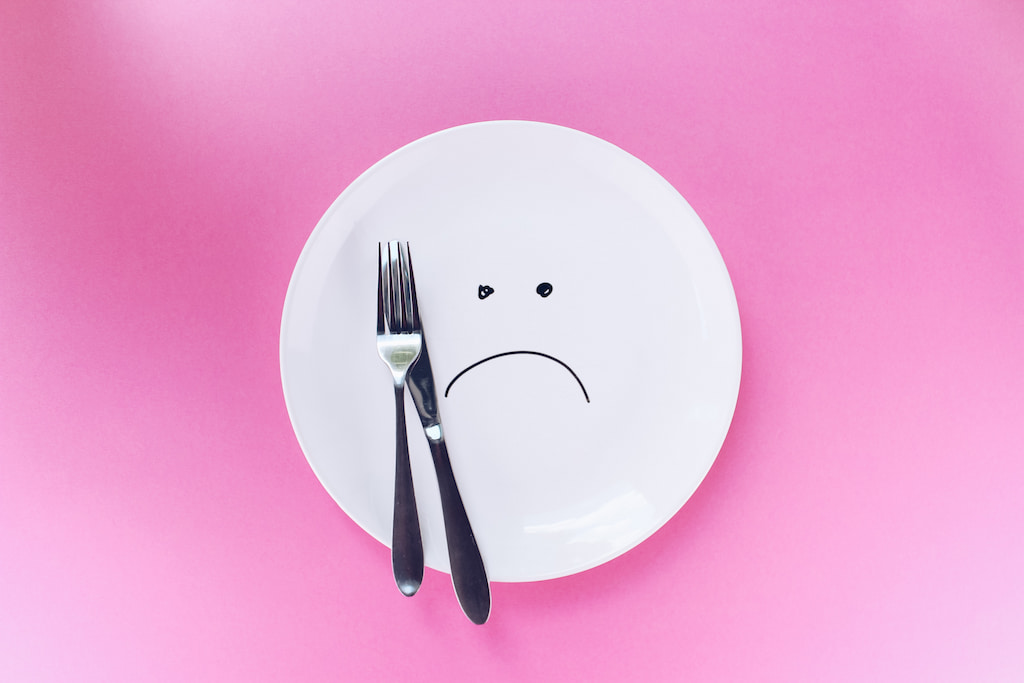
Our thoughts directly affect our emotions. Our comments and inner conversations about our body can sometimes cause us to feel anger, shame, sadness, and guilt towards ourselves. Of course, we may criticize or dislike ourselves from time to time, this is part of being human. The important point here is the tone of criticism. In other words, it’s not the criticism itself that saddens and harms us, but whether the tone of criticism is judgmental or destructive. Making more constructive criticism also increases our self-compassion. When we approach ourselves with compassion, the relationship we establish with ourselves and our bodies begins to improve.
Seed Suggestion:
Though we choose our words carefully for those people we love, we can be our own harshest critics. One of the most important parts of being able to improve our relationship with our body is self-compassion. Question: Can I talk to my body like I would talk to a close friend? Can I reflect this understanding and compassion in my tone of voice, attitude, and thoughts?
6.Being solely goal-oriented
Our life’s a journey of growth and development. That’s why the journey itself can sometimes be more important and precious than the destination. You can think of it as the car ride we take on vacation. Of course, arriving at our destination brings us joy, but aren’t the conversations along the way, the scenery, how we overcome any hardships, and our adventures all part of this vacation? However, in today’s society, we’re steeped in goal-oriented thinking from deadlines, to fitness, to diet culture, we’re conditioned by the media and capitalism in the business world to achieve, achieve, achieve. Let’s take a moment to focus on our journey, what serves us and what does not, celebrating the process as we go.
Seed Suggestion:
It’s important to take breaks while traveling. In this way, we can both fuel the energy and motivation we need for the rest of the road and enjoy the here-and-now. Let’s not forget that “happiness” is not only about reaching the destination at the end of the road but also being able to recognize the beauties in this journey and coping with the challenges along the way. In this process, all the difficulties we overcome, the hard work we put in, and the effort to do our best are all parts of our success. Question: Which roads did I walk to get to where I am today? Can I thank myself for all my effort and hard work? Can I be “enough” as I am at this moment?
The seeds you sow today will bloom and bear fruit in the future. What’s the dream you have for your garden? What do you want to grow and flourish?



Maravilhosa reflexão!
Obrigada por compartilhar!
Aprendendo gratidão a cada dia!